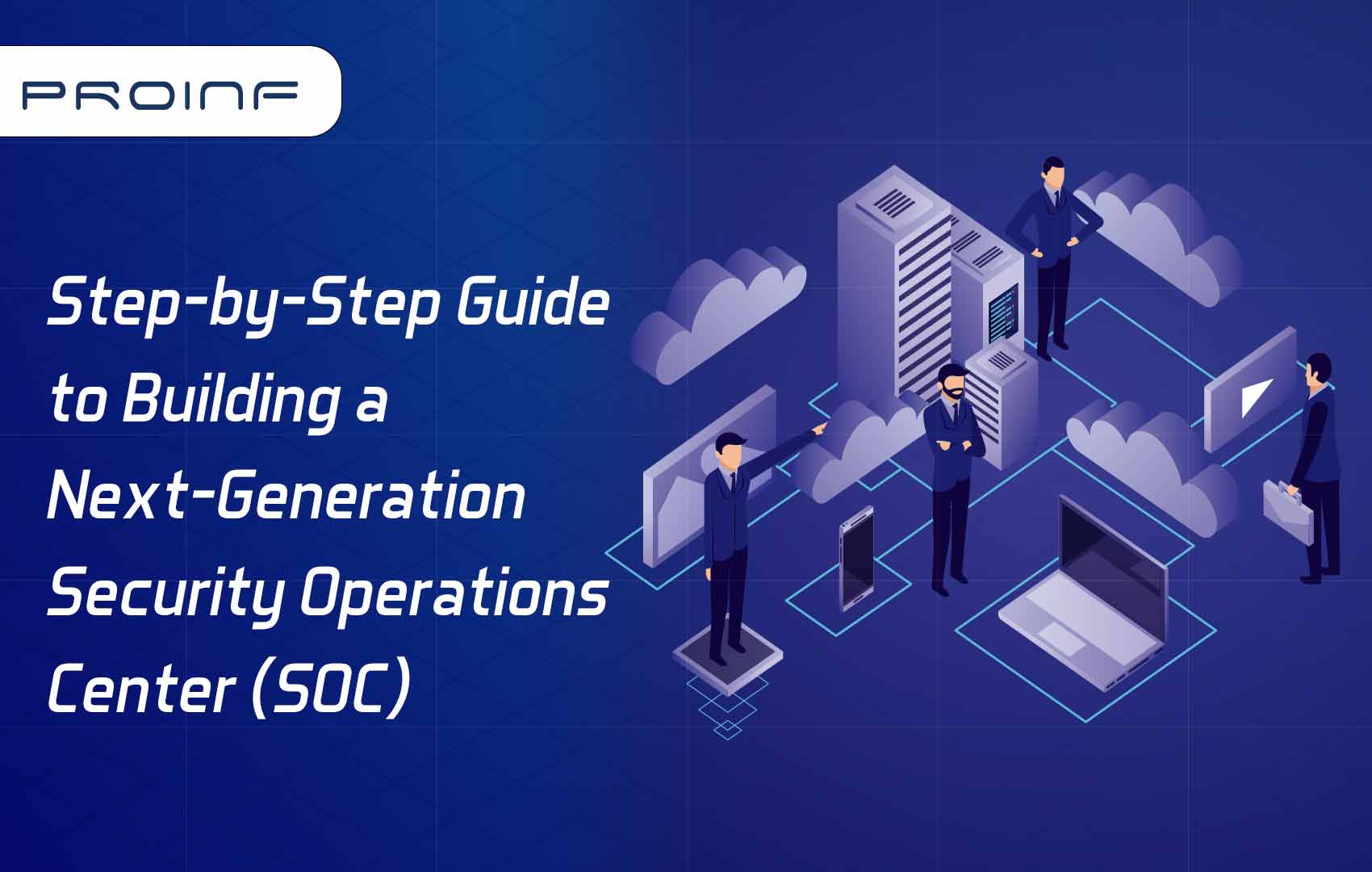How Hyper-converged infrastructure helps taking the next step in your business?
Hyper-converged infrastructure is a paradigm shift in data center technologies aiming at scalability and reducing infrastructure environment.
How is Hyper-converged infrastructure defined?
A "hyper-converged infrastructure" (HCI) virtualizes every component of traditional "hardware-defined" systems. HCI incorporates software-defined storage, virtualized networking, and virtualized computing as a minimum. HCI is frequently used on commercial off-the-shelf servers. Hyperconverged infrastructure (HCI) and converged infrastructure (CI) differ primarily in that HCI implements the storage area network and the underlying storage abstractions practically in software as opposed to physically in hardware. Management of all resources may be federated across all instances of a hyper-converged infrastructure since software-defined elements are implemented in the hypervisor's environment.
How are HCI benefiting Enterprises?
HCI unifies the whole data center stack, including virtualization, computation, storage, and storage networking.
To address typical pain points associated with old infrastructure, it explicitly mixes commodity data center server hardware with locally connected storage devices and is driven by a distributed software layer. A distributed platform operating on industry-standard commodity servers replaces complex and expensive legacy infrastructure, allowing businesses to accurately tailor their workloads and grow as necessary. Every server, or node as it is often known, has x86 CPUs, SSDs, and HDDs. For better speed and robustness, software running on each node distributes all operational tasks throughout the cluster.
By separately scaling the different resources (CPU, RAM, and storage), hardware platform combinations are available to match any workload, and they may be provided with or without a GPU for graphics acceleration. All nodes include a flash to improve storage performance, and all-flash nodes are available to provide all corporate applications with the highest I/O throughput and lowest latency.
As a result, separate management solutions for servers, storage, storage networks, and virtualization are no longer required.
Hyper-converged infrastructure Appliances and Examples
HCI previously began with use cases like VDI and ROBO (remote or branch office). The situation has swiftly altered as more and more HCI solution customers have made their systems accessible for a growing number of production and data center workloads while also making preparations for the future.
Examples of top-notch applications that utilize HCI include:
- Databases: Microsoft SQL Server, Oracle, MySQL, SAP HANA, PostgreSQL, IBM DB2, and numerous others
- Business-critical applications: Virtualized server applications like SAP Business Suite, Oracle E-Business Suite, Epic, Microsoft Dynamics, Meditech, and others, supported on all significant hypervisors
- Big data: MongoDB, Splunk, Hadoop, Elastic, and more
- Cloud-native: Build and deploy cloud-native applications with Docker, Kubernetes, Chef, Puppet
- Virtual desktop infrastructure (VDI): VMware Horizon, Citrix
- Remote Office and Branch Office (ROBO): Print and file servers, office services, custom applications
Examples of top-notch applications that utilize HCI include:
- Scale Computing Platform
- Nutanix Cloud Infrastructure
- StarWind HCA
- Cisco HyperFlex
- VMWare vSAN
- SANsymphony
- HPE SimpliVity
- Dell VxRail
- Azure Stack HCI
- Dell PowerFlex
HCI enables a building-block approach with scale-out capabilities by enabling the convergence of physical storage onto contemporary servers. On the hypervisor, all crucial data center operations are carried out by a closely integrated software layer and termed as hyper-converged infrastructure kit advanced.
Hyper-converged infrastructure vs Cloud
Businesses are progressively moving IT applications to their public cloud services like Amazon Web Services (AWS), Microsoft Azure, and Google Cloud. Public cloud services allow enterprises to dynamically respond to shifting business demands since they are adaptable and dynamic.
Although flexibility has increased, cloud computing still has its share of difficulties. The specialized skill sets needed to build and deploy applications on public clouds differ from those of traditional IT teams, further specializing already highly siloed enterprises. Utilizing public cloud services also costs more than using on-site infrastructure, and it poses control and security issues.
Many of the distributed systems technologies that support public clouds also support hyper-converged infrastructure, allowing IT teams to develop private clouds that bring the advantages of cloud computing into data centers for businesses. To create a genuine hybrid cloud architecture, hyper-converged infrastructure services may also be extended into public clouds. This enables applications to be installed and managed using the same tools and processes while facilitating data and service migration between clouds.
Converged infrastructure vs Hyper-converged infrastructure
Converged Infrastructure (CI)
- Separate network, storage, and computing components
- It is possible to purchase components from the same or several vendors.
- Scale each component separately.
- After the creation of each component, different software and firmware were jointly designed.
- External cohesion via various management tiers
Hyper-converged infrastructure (HCI)
- When computation and storage are combined, the network is kept separate.
- The same vendor may be used to buy several components.
- Scale storage and computing simultaneously
- On computing nodes, software-defined storage is utilized.
- Jointly designed before the creation of the component
- Cohesion inside an organization using a single management plane (often a hypervisor)
Hyper-converged infrastructure use cases
Virtualization
- Hyper-converged infrastructure's two main use cases are virtual servers and virtual desktops. Suppliers of hyper-converged software are concentrating more on this market.
- Compared to a system constructed around independent components, HCI offers tighter integration and simpler administration.
- Another use for hardware-based HCI is virtualization, particularly for performance-critical applications and situations where it is not possible to install new hardware.
SMEs and remote offices
- Organizations may effectively manage their remote and branch office IT with hyper-convergence.
- Although dedicated, integrated hardware may seem like an expensive method to outfit remote offices, providers are aware that there is a market for smaller, distant sites where administrative simplicity is crucial.
- The single-supplier strategy eliminates the need to deal with several hardware types, and HCI is designed for remote management, making it suitable for situations without a local IT crew.
Kubernetes and containers
- HCI is a natural match for containers, particularly in the data center. Containers may interact directly with the underlying operating system and hardware since they don't require a hypervisor.
- Changing to HCI greatly streamlines the infrastructure. Kubernetes, the most popular container orchestrator, runs on Linux. Applications share the resources of the host server while each runs in its container.
- Many of the factors that make HCI effective for virtualization also make it effective for containers. Virtualization is made simpler by containers, while the hardware is simplified by HCI.
Analytics, AI, and machine learning
- Fast deployment and the capacity to grow by adding nodes are the driving forces behind HCI in analytics, machine learning, and artificial intelligence (AI).
- IT components that collaborate closely improve performance and dependability. For applications like machine learning and artificial intelligence, where data storage and computing resources frequently need to increase concurrently to prevent bottlenecks, the node strategy of hyper-converged software also works well.
- Advanced analytics or machine learning systems are rarely static. Usually, they are designed with growth in mind, with a constant feed of new data.
Backup and disaster recovery
- The simplest use case for HCI is backup. For redundancy and data duplication, just add a second hyper-converged system.
- HCI has the adaptability to handle backup and disaster recovery systems locally, remotely, or in the cloud.
- HCI is its "system-in-a-box" methodology.
Analytics, AI, and machine learning
Hyper-converged storage, in general, combines processing, networking, and storage on a single hardware platform. The software-defined infrastructure handles the storage and virtualization automatically using common HDDs and solid-state drives. The hardware platform is often built on inexpensive x86 hardware, which can be readily and affordably expanded to meet changing performance and storage space needs.
As a result, such solutions are perfect for data centers and medium to large-sized businesses. The simulation of many virtual machines as well as large volumes of data are both readily handled by hyper-converged infrastructures. MSPs, in particular, crave this solution because they want the highest level of automation with the least amount of work on their end.
What characteristics should a hyper-converged solution have?
You require a solution that provides a solution to meet your most difficult situations.
Performance and Support for every application
A diverse range of application deployment models must be supported by the appropriate HCI solution. Low latency and low IOPS fluctuation are necessary to execute your mission-critical programs quickly and consistently.
Integration with the cloud
Your solution must provide the flexibility to handle various hypervisors and deploy apps in whichever cloud environment is best for them as multi-cloud scenarios become more prevalent.
Scalability
The ideal solution will meet your IT requirements today and adapt as they change, giving you the ease and adaptability to deal with any workload or use case.
Centralized administration and infrastructure-wide integration of system resources managed from a single console make the jobs of IT security and management personnel easier.
IT can now more quickly adapt to shifting business demands thanks to the advancements made. The management of workload migration, infrastructure scale-out, and other crucial IT procedures that might otherwise slow down product development and release cycles may be done under a single administrative roof.
Market trends indicate that HCI will continue to draw IT expenditure as enterprises seek the technological answer as the next logical step toward significant advances in virtualized, converged, and software-driven infrastructure settings.


